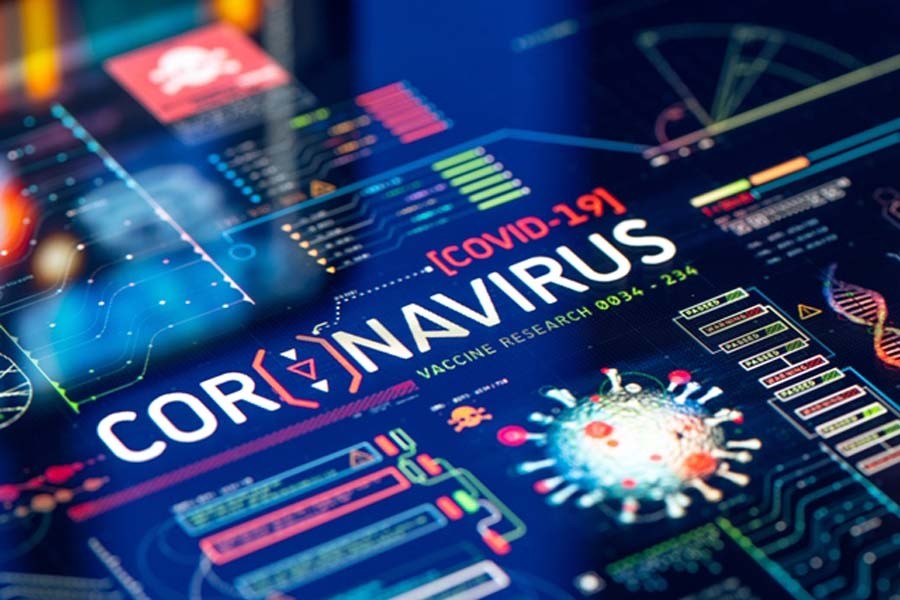A crisis can be as simple as being short-staffed one night to an extreme of requiring emergency response to a disaster. When presented with a crisis, how quickly and how effectively it is responded to, make all the difference. And the most effective way to do so is with the help of technology. For example, a staggering amount of geospatial information has emerged (using GIS software) regarding the recent COVID-19 outbreak. Dashboards with dynamic maps, near real-time services, and online repositories have built the foundation for an extraordinarily transparent response effort. These analytics can be relayed to the appropriate stakeholders, for instance public health agencies, so that they can make decisions effectively for managing the crisis at hand.
Technology helps accelerating and expanding access to critical resources and information. It also helps engaging response protocols intelligently and keeping the public updated. Due to the modern cloud server facilities, the data storage and relay is now faster and easier than ever.
Use of artificial intelligence
Artificial intelligence, for example drones are now used to locate survivors and transmit information to emergency teams. They are also used to drop humanitarian aid. Projects like SERVAL even permit connectivity without network coverage, which is very helpful in times of power outage. The NASA Finder has gone as far as locating trapped survivors by scanning for heartbeats. ALIRT (Airborne Ladar Imaging Research Testbed) is a technology that can produce maps with high-resolution 3D renderings of terrain, helping agencies to effectively dispatch vital resources.
Apart from just search and rescue operations, there are other applications like fire retardants mounted on unmanned vehicles, etc. Such examples were reported in the Australia bushfire in 2020 and Amazon wildfire in 2019.
Google's Neural Translation is another example, albeit an unusual one. It helps people from different languages to communicate in short notice.
Use of social media
During the Las Vegas shooting in 2017, Facebook activated its Safety Check feature, allowing users to mark themselves as safe during the massacre. There are also real-time monitoring platforms like Ubermetrics and TweetDeck and mass notification management solutions like Onsolve, Call-Em-All and Xmatters. These all help to contact thousands of people simultaneously. These mainly work by locating smartdevices via GPS and managing without any data throttling, which is a great advancement in crisis management technology.
There are also collaborative hubs used by crisis management authorities like Slack, In Case of Crisis and eeedo Desk. Even the simple use of hashtags and geo-tagged contents for quick-alert, helped to rescue agencies decide where to deploy help.
Disaster relief
The application Micromappers creates maps from social media relief updates from affected areas in real-time and sends them to aid agencies for effectively planning relief efforts, before entering into disaster zones. Google People Finder is another innovative application, which allows users to post and search for the status of people affected by a disaster. During the 2015 Nepal earthquake, well over 7,500 records on the people finder were searched. The application Red Cross Emergency has been incredibly helpful by providing survivors weather updates, preparedness information and safety tips.
Prediction technologies
As prevention is better than cure, the tech world has adapted different platforms to predict crisis beforehand. For example, California's SHAKEALERT, an earthquake warning system has been sending user notifications since 2012. Then there is WIFIRE, an artificial intelligence to forecast wildfires.
All these technologies use satellite data from radar or thermal imagery, ground motion sensors and computer simulations. The predictions can be used by authorities to decide whether or not to issue warnings, reducing chaos.
Emergency preparedness
Preparedness could be anything from tracking an issue to cyber security using solutions like FireEye or Agari. When people flee their homes, they often lose access to critical identification documents. Thus, collecting and sharing baseline data on digital identification is very important. The Humanitarian Data Exchange (HDX) is an open platform for sharing data during crises and to organisations. Solutions like WeRobotics facilitated network of local knowledge hubs, "Flying Labs®" in Africa, Asia and Latin America.
MasterCard is working to seal agreements on mobile money solutions before any crisis takes place.
These would benefit refugees and providers by creating easy relief provisions and payment methods.
Maisha is a student of Geography and Environment at Dhaka University. She is a blogger, copywriter, proofreader and freelancer. She can be reached at [email protected]


